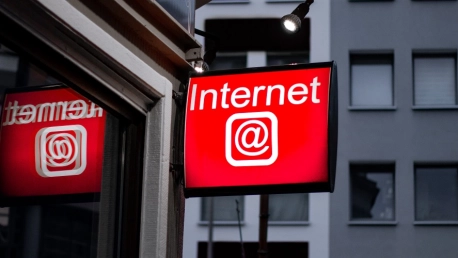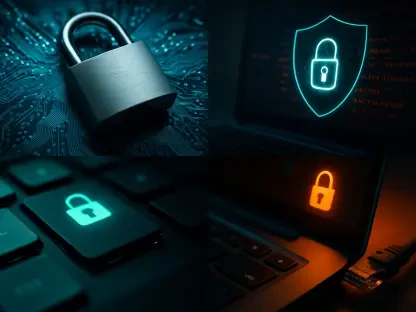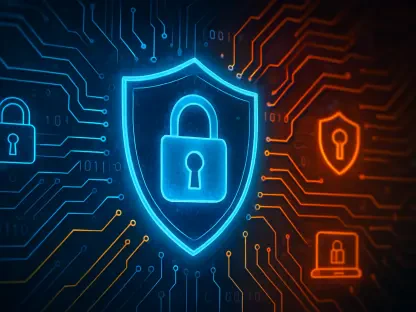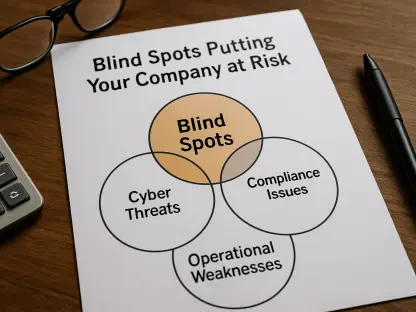The paradigm shift to the Internet of Things (IoT) and the emergence of edge computing have brought in huge potential for various IoT application scenes. While IoT is creating entirely new businesses and revenue streams, it has also created new opportunities for vital information to be compromised. Adopting an integrated risk philosophy is becoming common practice for business leaders, as cybersecurity challenges are getting more and more complicated in an IoT world.
IoT creates new opportunities for information to be compromised
When it comes to cybersecurity, there are two types of people: those who are focused on creating a closed system that could never be cracked and those who are convinced that converged technologies require an approach based on the entire ecosystem. As the industry migrates from analog to IP-based technology and the new IoT ecosystem, every cybersecurity measure put in place, or lack thereof, can impact everything else on the network.
Modern IT ecosystems often consist of products and services from different vendors, working together to create a complete solution. When you add to this mix of smartphones, laptops, and tablets running software that require system access, you will realize that the number of devices which pose a potential cybersecurity risk is quite large.
It is always important to remember that there is no guarantee in cybersecurity, and people can induce vulnerabilities. For example, an employee could accidentally introduce a Trojan to the system through a personal device or any other terminal.
As more and more companies are migrating from on-premise to cloud computing, the virus can quickly spread through the entire ecosystem.
Developing an effective cybersecurity strategy
Developing an effective cybersecurity strategy for IoT ecosystems means finding the optimal way of merging best practices from both the physical security world and the best practices of traditional IT.
In a converged ecosystem, such as an IP-based physical security scenario, cyber threats and vulnerabilities become much more complex. Not only does the number of components increase, but the number of vendors providing that technology and the number of users accessing it increases as well. To mitigate risks in this kind of open ecosystem, you need all vendors operating on the same cybersecurity coordinates.
In a best-case scenario, IT, physical security, and technology vendors work as a unified body and reach a consensus on current standards and current cyber risk mitigation technologies.
No matter how sophisticated IoT devices and integrated systems become, they continue to operate in an IT world. And as such, system builders need to adopt a cooperative cyber protection strategy. Mature IoT technologies will need to evolve to take advantage of some of the emerging IoT cyber protection techniques.
IT departments must understand the environment in which their organization is evolving and address the growing risk of cyber threats as a joint effort between vendors, security, and IT professionals.
IoT device lifecycle management
An additional and critical aspect of ensuring cybersecurity in an IoT world is lifecycle management. According to a blog post, Axis security experts state that:
“With a constantly evolving threat landscape, it is inevitable that software-based technologies will need to be regularly updated and patched to protect them against new threats. Responsible manufacturers regularly release firmware updates and security patches to address vulnerabilities, fix bugs, and resolve other issues that may affect performance over time. Unfortunately, not all end-users are as disciplined about implementing these updates when they become available. Following lifecycle management best practices — such as knowing where risk areas lie and keeping current on how those areas might be exploited — helps ensure businesses stay secure.”
The Internet of Things (IoT) market is growing rapidly across industries
Due to the real-time data insights and automated responses that technology can now provide, the IoT market is growing rapidly across industries — despite the chip shortage and COVID-19’s extended impact on the supply chain. As network infrastructure continues to advance its bandwidth and low latency, IoT is also expected to become more effective and widely available.
According to the Mordor Intelligence study, the global IoT market is expected to reach a value of 1,386.06 billion USD by 2026 from 761.4 billion USD in 2020 — at a CAGR of 10.53% during the forecast period (2021-2026). The growth is occurring in a few industrial sectors, namely manufacturing, retail, and health care, where IoT technology has been deployed to track illness and handle other logistics.
From smart factory floors to autonomous vehicles, the Internet of Things (IoT) is constantly transforming how we live and work. As more and more devices connect to the corporate network, understanding the cybersecurity challenges is the key to a healthy business.









